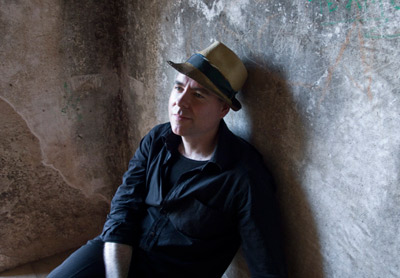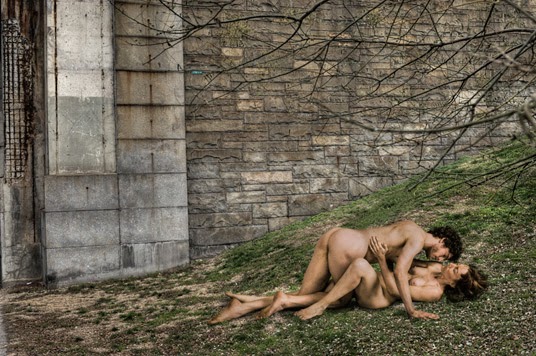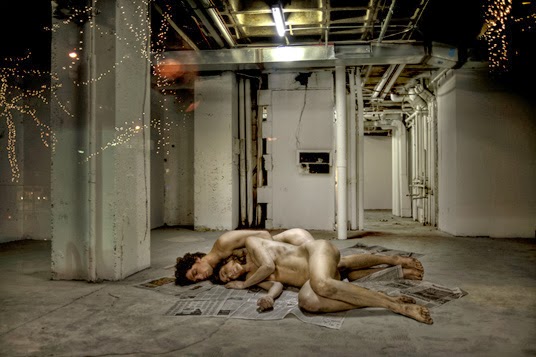Photographer Interview: Jaime Permuth
 |
| Photographer Jaime Permuth |
I found photographer Jaime Permuth through our mutual friend, curator Lisa Henry.
Recently one of Jaime’s images was nominated for an award at the 2009 New York Photography Festival. The image is part of a series is entitled The Completely Visible World, which is part of his graduate thesis work as a candidate for a Masters of Professional Studies in Digital Photography at the School of Visual Arts.
D&B: Where are you from?
JP: I am a Guatemalan photographer based in New York since the early ’90s.
D&B: What kind of photography do you shoot and how did you get started – any “formal” training?
JP: My grandmother, Annie Listwa, was the first photographer in the family. She taught my father, Mario, and gave him his first camera. He in turn continued the tradition with myself and my younger brother, Igal.
Growing up, I fell in love with the photographs of Robert Capa and then moved onto Cartier Bresson and Kertesz. However, without a doubt my greatest influence was the work of Manuel Alvarez Bravo.
When I completed my high-school education in Guatemala I moved to Israel to attend the Hebrew University of Jerusalem, where I studied Psychology and English Literature. I had my first solo exhibitions in that city, started working as a freelance shooter and came to the conclusion that photography was my true calling.
My next move was to NYC where I completed an MFA in Photography at the School of Visual Arts. That was fifteen years ago. Last year, I returned to the School of Visual Arts for a one-year intensive Master of Professional Studies in Digital Photography.
 |
| Copyright Jaime Permuth |
D&B: What cameras or techniques do you use?
JP: I’ve shot with just about every type of camera and format. These days my camera of choice is a Nikon D700 and my workflow is almost exclusively digital.
D&B: Who are your mentors (in photography)?
JP: When I first graduated from SVA in ’94 I had an opportunity to go to work for some of New York’s most amazing photographers: Lois Greenfield, Gilles Peress, Rosalind Solomon and Patrick Demarchelier. I am also constantly inspired by friends and colleagues such as Gerald Cyrus, Vince Cianni, Kristin Capp, Paula Gillen, Edwine Seymour and Elizabeth Young.
D&B: Have you experienced any setbacks or different treatment along your photography career that you would attribute to being a photographer of color? (this question is optional)
JP: Well, growing up in Guatemala, camera perpetually slung from my neck, I was always taken for a “gringo”. Later, in Israel, I was always a “Diaspora Jew”. Coming to the USA, I seem to have finally made it into the Latin American category… with all the immigration issues that entails.
In the African-American/Caribbean neighborhood of Brooklyn where I live, most people tag me for an undercover cop. Is all of this a setback? Hard to say, but it has made me somewhat of an outsider all of my life.
D&B: When did you realize you could have a career in photography? Describe your journey towards becoming a working photographer.
JP: When I was ten years of age I took my first snapshot with a pocket-sized Kodak Instamatic. It was love at first sight. Although I could not have put it into words back then, the idea that you could manage the complexity of the world in that small rectangular frame was a true epiphany. I was hooked the moment I clicked that shutter.
As I mentioned before, I come from a family of very talented photographers. However, I am the first to embrace photography as a career and livelihood. As a photographer, my practice is in Fine Art. My projects tend to be long-term and are most often presented in museums. I am also an educator and have taught in many of New York’s regional colleges as well as in the framework of national and international workshops.
 |
| Copyright Jaime Permuth |
D&B: What do you hope to achieve with your photography?
JP: For me, photography is a way of being in the world. It allows me to engage my intellectual and creative energy to it’s fullest capacity. Also, I choose my own projects. In practice, this means that I have the great liberty to explore what is most relevant to my development as a human being.
I hope that when I look back at my life’s work I see a clear, organic link that leads from one project to another, and that the sum of all projects is greater than any one of its parts.
D&B: What’s your dream photography project?
JP: For the past seven years I’ve been at work on a trilogy of family projects in collaboration with my father and brother. To date we’ve completed the first two installments in book and exhibition format: Family Portrait (2004) and Tarzan Lopez (2007). I’d love for us to conclude the final installment of the trilogy in the coming year.
_________________________________________________________________________________
Dodge & Burn is a blog dedicated to documenting a more inclusive history of photography and supporting the work of photographers of color with photographer interviews.
This blog is published by visual artist and writer, Qiana Mestrich. For regular updates on diversity in photography history, follow Qiana on Twitter @mestrich, Like the Dodge & Burn Blog page on Facebook or subscribe to Dodge & Burn by email.
You must be logged in to post a comment.

+ There are no comments
Add yours